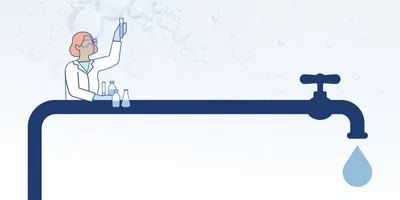Laboratories drive scientific discovery and innovation, but they also consume far more energy than typical commercial buildings. As institutions, companies, and research organizations intensify efforts to reduce their environmental footprint, labs have emerged as essential targets in the global decarbonization conversation.
Sustainability initiatives in the lab often focus on obvious contributors: single-use plastics, water consumption, or energy-intensive equipment. But one of the largest—and most overlooked—sources of energy use lies in how labs are ventilated. Traditional lab ventilation and air handling systems, designed primarily with safety in mind, now face growing scrutiny for their role in greenhouse gas emissions and high operating costs. This is where filtration comes in: not just as a safety tool, but as a sustainability strategy.
This article introduces the concept of lab air filtration as a critical yet underused lever in lab decarbonization. It sets the stage for a broader series exploring how filtration technologies can help labs reduce energy use, enhance lab safety, and align with institutional sustainability goals.
Ventilation: a hidden driver of lab emissions
Lab ventilation systems control the quality of supply and exhaust air, ensuring the air is continuously replaced to prevent the buildup of airborne contaminants. Typically, lab ventilation is set to provide six to 12 air changes per hour (ACH), which can consume the equivalent energy of multiple households.
Typical lab air handling systems include:
- HVAC systems, which manage the supply of outside air and the exhaust of lab air, while maintaining appropriate temperature and humidity
- Containment systems, such as fume hoods and biological safety cabinets, which draw in contaminated air and exhaust it outside or filter it for recirculation
Ducted fume hoods, while effective, can have a significant environmental impact. When in operation, these hoods continuously exhaust large volumes of air, increasing the load on HVAC systems and contributing to higher energy consumption and operational costs. Additionally, they typically release contaminated air into the environment, which can lead to reduced air quality and long-term environmental degradation.
Rethinking air safety: the case for filtration
Filtration offers a path forward—one that maintains safety while supporting sustainability. In this context, air filtration refers to engineered systems that capture contaminants before they enter room air or are vented outside. These include:
- Carbon and molecular filters for capturing volatile organic compounds (VOCs)
- HEPA and ULPA filters for particulates and biological agents
- Filtration-integrated containment devices, such as ductless filtered fume hoods
Unlike traditional systems that rely on exhausting large volumes of air, filtered solutions often recirculate air back into the room after removing contaminants. This eliminates or reduces the need for ductwork and minimizes the strain on HVAC systems without compromising safety.
When implemented correctly, filtration-based solutions can dramatically cut down on the air that needs to be conditioned, heated, and exhausted—which adds up quickly in a lab setting.
Filtered fume hoods, for example, use carbon filters to adsorb chemicals rather than venting them outdoors. These systems can be installed without ductwork, making them flexible and scalable across new builds and retrofits. And because they don’t rely on constant airflow, they allow for smarter energy management.
Meeting sustainability benchmarks through air filtration
Filtration not only helps labs reduce emissions, it also supports compliance with institutional and industry frameworks that define sustainability progress.
- Scope 1 and Scope 2 emissions: By lowering the demand on heating and cooling systems, filtration reduces on-site energy use (Scope 1) and the electricity purchased to power ventilation systems (Scope 2).
- LEED certification: The U.S. Green Building Council’s LEED framework awards points for energy optimization, indoor air quality, and innovative design—criteria that filtration supports.
- LEAF (Laboratory Efficiency Assessment Framework): This program helps research institutions benchmark lab sustainability. Filtration contributes to higher efficiency scores by enabling reduced air changes and energy demand.
- Carbon neutrality goals: Whether institution-wide or department-specific, many labs are under pressure to meet net-zero targets. Filtration-based containment can be a key tool in reducing emissions without sacrificing lab function.
In many cases, filtration supports operational agility as well. Because filtered containment devices don’t require fixed ductwork, they allow for faster lab reconfigurations, lower capital costs, and reduced facility downtime—benefits that extend beyond sustainability.
Looking ahead
To reduce emissions in a meaningful way, institutions must address the core systems that drive energy use—and ventilation is one of the largest. By capturing hazardous substances at the source and reducing the need to continuously expel and replace large volumes of conditioned air, filtration-based containment systems offer a practical way for labs to lower energy consumption without compromising research integrity or safety.



